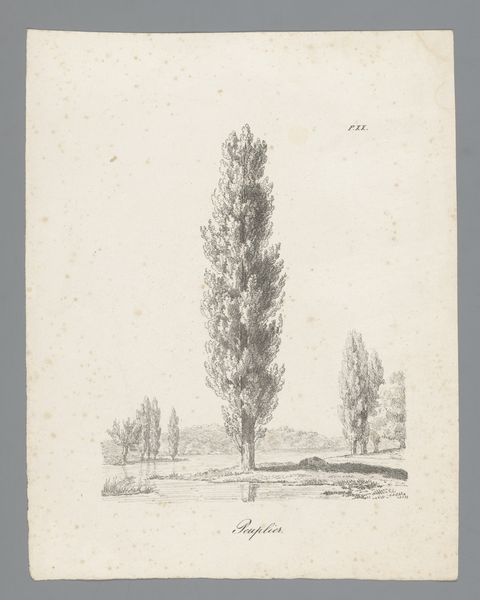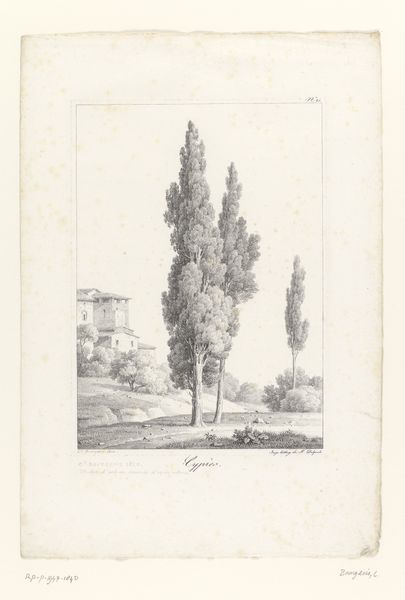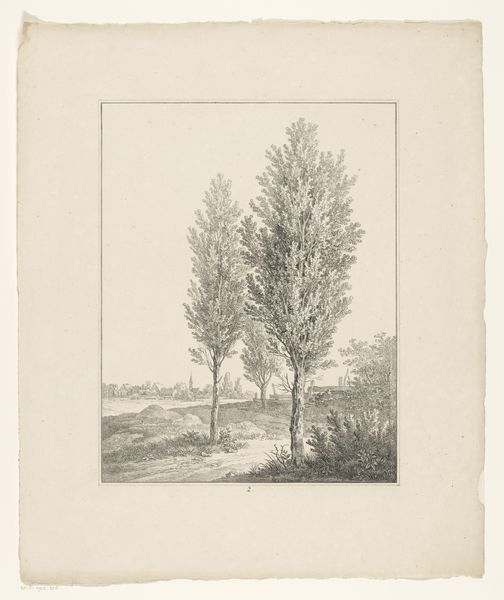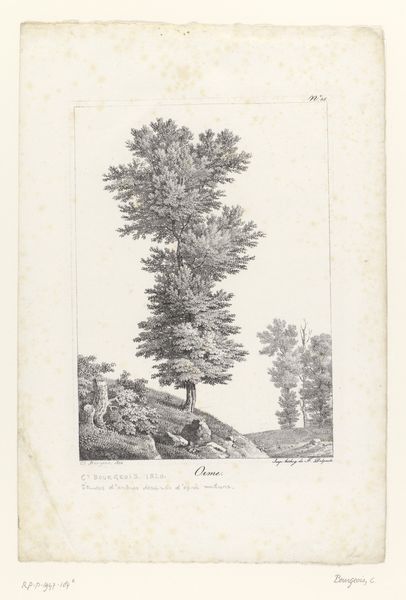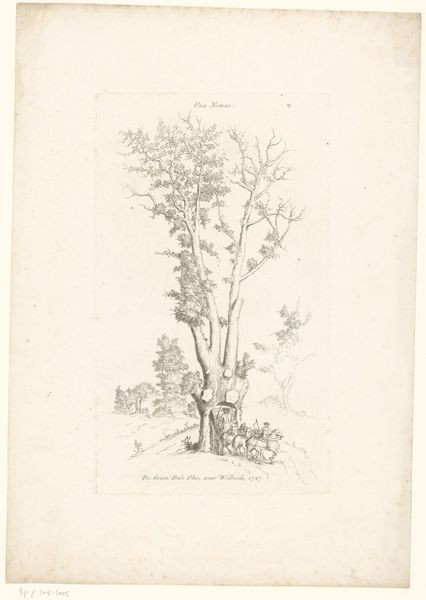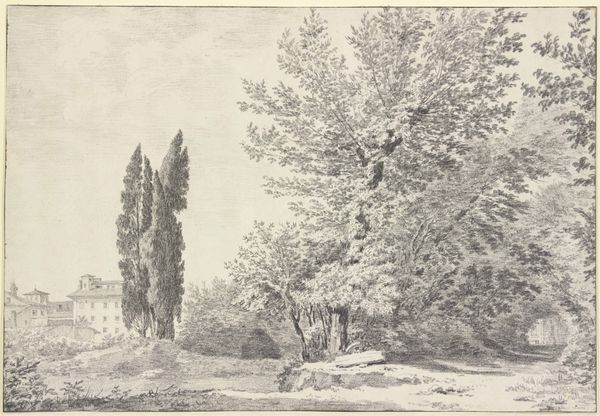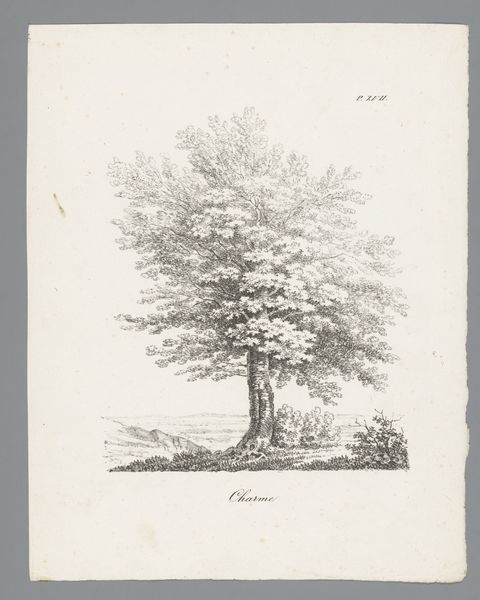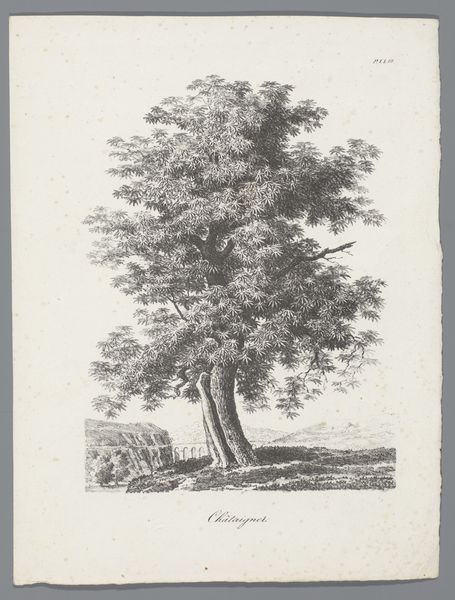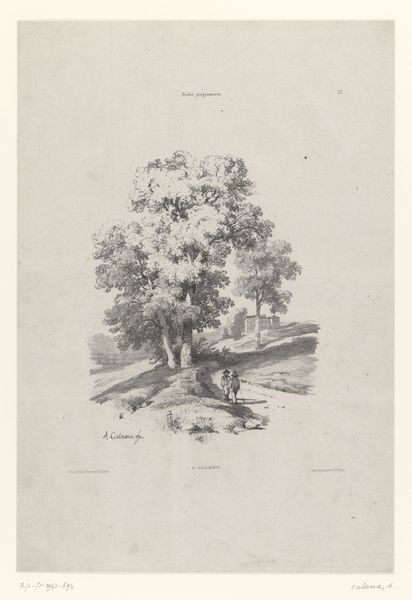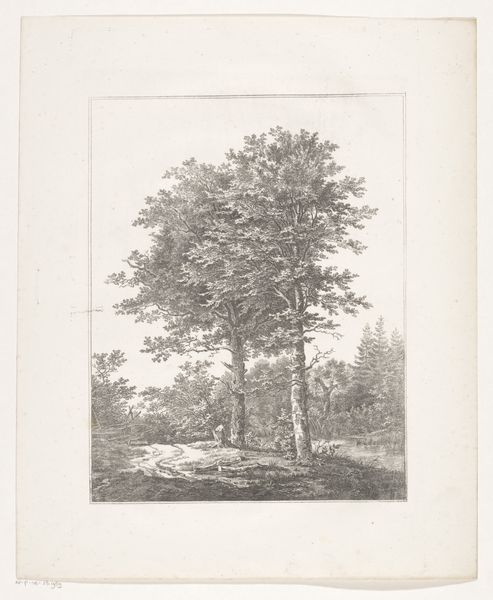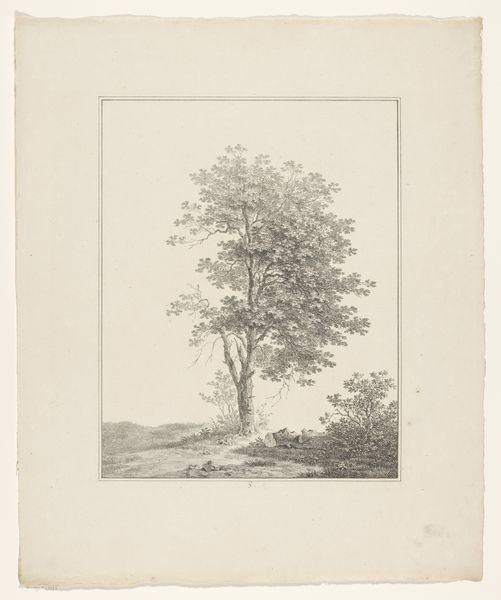
drawing, paper, pencil
#
drawing
#
landscape
#
figuration
#
paper
#
romanticism
#
pencil
#
line
#
realism
Dimensions: height 438 mm, width 300 mm
Copyright: Rijks Museum: Open Domain
Editor: This delicate pencil drawing from 1819, titled "Populier," depicts a grove of slender trees. Created by Constant Bourgeois, the piece is remarkably detailed, despite its limited palette. There’s something almost melancholic about it, a quiet stillness. What strikes you about it? Curator: Immediately, I'm drawn to how the trees function almost as standing stones. Bourgeois chose poplars, trees associated with mourning since ancient times. Notice their placement—isolated on the gently rolling hills. They evoke a sense of solitary contemplation. Does the way the artist rendered them remind you of anything? Editor: I see what you mean, with the 'standing stones'! It reminds me a bit of earlier, Romantic depictions of ruins, only these are living things, not relics of the past. What's interesting is, in comparison with the old ruins, here nature reclaims and perseveres with life rather than ruins with memories and deaths! Curator: Precisely. And the symbolism persists! In the 19th century, poplars often symbolized grief and remembrance. This drawing, with its precise lines, paradoxically stirs an almost palpable sense of longing. Think about the role of trees in art and mythology as mediators between earth and sky, between the conscious and unconscious. What feelings does it leave you with? Editor: I hadn't considered the grief aspect so deeply. It does make the image more poignant. Perhaps it speaks to the enduring cycle of life and death, the constant presence of loss even amidst beauty. I appreciate the work more having thought about these symbols and cultural memories. Curator: And, hopefully, the subtle ways they continue to speak to us across time!
Comments
No comments
Be the first to comment and join the conversation on the ultimate creative platform.
